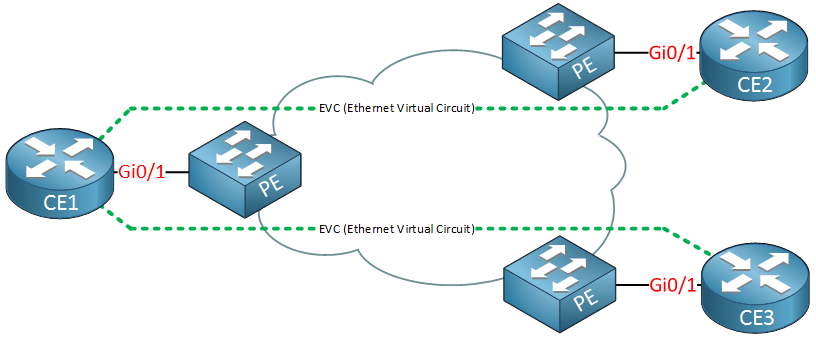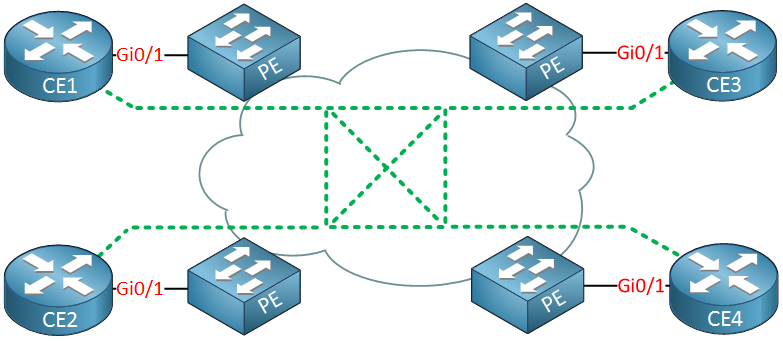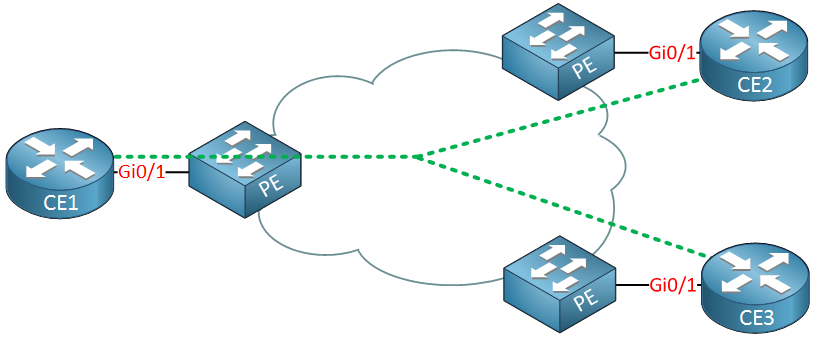Lesson Contents
Ethernet was originally created for the LAN (Local Area Network) and not for the WAN (Wide Area Network), one of the reasons was the distance limitation that the first Ethernet standards offered.
The technology of Ethernet is used a lot in networking products, which makes it cheap to produce Ethernet products compared to other networking technology. This is one of the reasons why Ethernet is interesting to use outside of the LAN.
Metro Ethernet was first used outside of the LAN in metropolitan areas, called MANs (Metropolitan Area Network). We use fiber cabling because of the support for longer distances. Here are some of the standards that are suitable for Metro Ethernet:
| Name | Distance | Bandwidth |
| 100Base-LX10 | 10 Km | 100 Mbps |
| 1000Base-LX | 5 Km | 1 Gbps |
| 1000Base-LX10 | 10 Km | 1 Gbps |
| 1000Base-ZX | 100 Km | 1 Gbps |
| 10Gbase-LR | 10 Km | 10 Gbps |
| 10Gbase-ER | 40 Km | 10 Gbps |
| 40Gbase-LR4 | 10 Km | 40 Gbps |
| 100Gbase-ER4 | 40 Km | 100 Gbps |
As you can see in the table above, we can now cover distances of up to 100 Km (62 miles) and up to 100 Gbps.
Metro Ethernet was first only used in metropolitan areas, that’s why it’s called “Metro” Ethernet. Nowadays it’s also used for long-distance WAN links, often named Carrier Ethernet.
From the customer’s perspective, it’s like you are connected to a regular switch:

On the customer’s side, you get an Ethernet connection that you can connect to your router, switch or firewall. The provider will use switches on the edge of their network. The technology that is used inside the provider network is unknown to the customer. This could be something like MPLS. Ethernet frames that are sent by the customer router on one end, will be transparently transported to the other end.
Metro Ethernet Services and Topologies
There are several different Metro Ethernet services, each service has a different topology. The MEF (Metro Ethernet Forum) is a non-profit consortium that defines standards and services for Metro Ethernet. In the remaining of this lesson, we’ll discuss some of the most common services:
- E-Line (Ethernet Line Service)
- E-LAN (Ethernet LAN Service)
- E-Tree (Ethernet Tree Service)
E-Line (Ethernet Line Service)
The Ethernet Line Service is the simplest Metro Ethernet service, it’s a point-to-point connection between two sites:

From the customer’s perspective, it’s like connecting two routers to each other with a crossover cable. It’s a layer two link so if you configure IP addresses, the routers will be in the same subnet. The point-to-point link is called an EVC (Ethernet Virtual Circuit).
If you have multiple sites, it is possible to use multiple E-lines on a single physical interface:

When you use multiple E-lines on a single physical interface, we use 802.1Q trunking and a different VLAN for each E-line.
Another common name for E-Line is VPWS (Virtual Private Wire Service). This name is used when the provider uses MPLS on their network, transporting Ethernet over the MPLS network.
E-LAN (Ethernet LAN Service)
If you have a lot of sites and you want each site to be able to send frames directly to any other site, you might want to use an E-LAN. It’s a full-mesh topology that acts like a big switch:

The green line represents a single EVC that connects all four sites together, creating one E-LAN. All sites will be able to reach each other directly.
Another common name for E-LAN is VPLS (Virtual Private LAN Service).
E-Tree (Ethernet Tree Service)
The third topology is the E-Tree, this topology is useful if you have a central site and some other sites that mostly need to access resources at the central site:

This is a root with leaves topology where CE1 is the root of the tree and CE2/CE3 are leaves. It’s also known as a hub and spoke topology, partial mesh or point-to-multipoint. Leave-to-leave communication is still possible but it will have to go through the main site.
Conclusion
You have now learned the basics of Metro Ethernet:
- Ethernet technology is interesting because it is used in so many products, making it cheaper compared to some other technologies.
- Ethernet was first used outside of the LAN in MANs (Metropolitan Area Network), which is why we call it Metro Ethernet.
- Ethernet is also used on WAN connections, which is why we also call it carrier Ethernet. The provider might use another technology on their network but the end-to-end protocol in use is Ethernet.
- The MEF (Metro Ethernet Forum) defines standards and services for Metro Ethernet.
- Some basic topologies:
- E-Line: point-to-point connection between two sites.
- E-Lan: full-mesh network between different sites.
- E-Tree: root and leaves topology where the central site is the root of the tree and the other sites are the leaves.


Should be 40Gbase-LR4 not 400Gbase-LR4. Just a mild typo.
Hello Max
Yes you are correct, thank you for catching that. It would be nice to have such speeds however .
.
I will let @ReneMolenaar know to change that.
Thanks again!
Laz
Just fixed it, thanks
Hello Rene,
Is there already a lesson about E-LAN or VPLS?
Hello Evan
As far as I know, @ReneMolenaar doesn’t have such a lesson, however, you can submit ideas for future lessons that Rene will be creating at the following link: https://networklessons.com/member-ideas/
I hope this has been helpful!
Laz